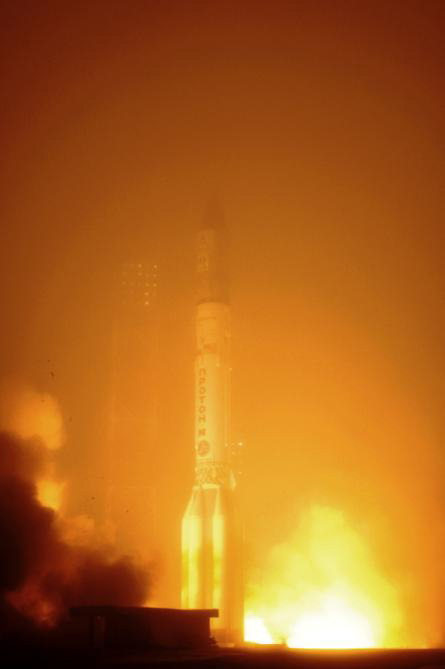Swedish Communications Satellite Reaches Orbit

A newSwedish telecommunications satellite roared into space Saturday, riding aRussian-built rocket successfully into orbit.
The Sirius4 satellite launchedspaceward atop a Proton M booster at 5:39 p.m. EST (2239 GMT) from theCentral Asian spaceport of Baikonur Cosmodrome in Kazakhstan.
Built byLockheed Martin for the Solna, Sweden-based communications provider SES Sirius,the Sirius 4 satellite will provide direct-to-home television and otherservices to customers across Europe, Africa and the Baltic/Nordic region.
"Weare very proud and satisfied that the Sirius 4 mission has been asuccess," said Hakan Sjodin, managing director of SES Sirius, in astatement. "Sirius 4 will benefit our customers and extend our coverageand service in Eastern Europe.?
Weighing inat 9,667 pounds (4,385 kilograms), the Sirius 4 satellite carries 53 activeKu-band transponders, two active KA-band transponders and designed for a15-year service lifetime. The McLean, Va.-based launch service providerInternational Launch Services (ILS) oversaw the satellite?s Saturday launch.
"Thiswas an especially important mission for ILS and our customer, SES SIRIUS,"said ILS president Frank McKenna in a statement. "ILS and our partner,Khrunichev, continue to focus on performance and on our long-term relationshipwith the SES group of companies."
Sirius 4?s liftoffmarked ILS? fourth Proton launch of the year and its 43rd mission using theRussian-built booster. It also marked the secondsuccessful Proton flight since a faulty cable foiledthe launch of a Japanese satellite on Sept. 5.
Breaking space news, the latest updates on rocket launches, skywatching events and more!
After launch,Sirius 4?s Breeze M upper stage guided the spacecraft on a nine-hour and13-minute trip to send it toward its final geostationary orbit 22,236 miles(35,786 kilometers) above Earth. The successful launch marked the 329th flightof a Proton rocket.
- Looking Back on 50 Years of Spaceflight
- IMAGES: 20 Great Rocket Launches
- All About Satellites

Tariq is the award-winning Editor-in-Chief of Space.com and joined the team in 2001. He covers human spaceflight, as well as skywatching and entertainment. He became Space.com's Editor-in-Chief in 2019. Before joining Space.com, Tariq was a staff reporter for The Los Angeles Times covering education and city beats in La Habra, Fullerton and Huntington Beach. He's a recipient of the 2022 Harry Kolcum Award for excellence in space reporting and the 2025 Space Pioneer Award from the National Space Society. He is an Eagle Scout and Space Camp alum with journalism degrees from the USC and NYU. You can find Tariq at Space.com and as the co-host to the This Week In Space podcast on the TWiT network. To see his latest project, you can follow Tariq on Twitter @tariqjmalik.
